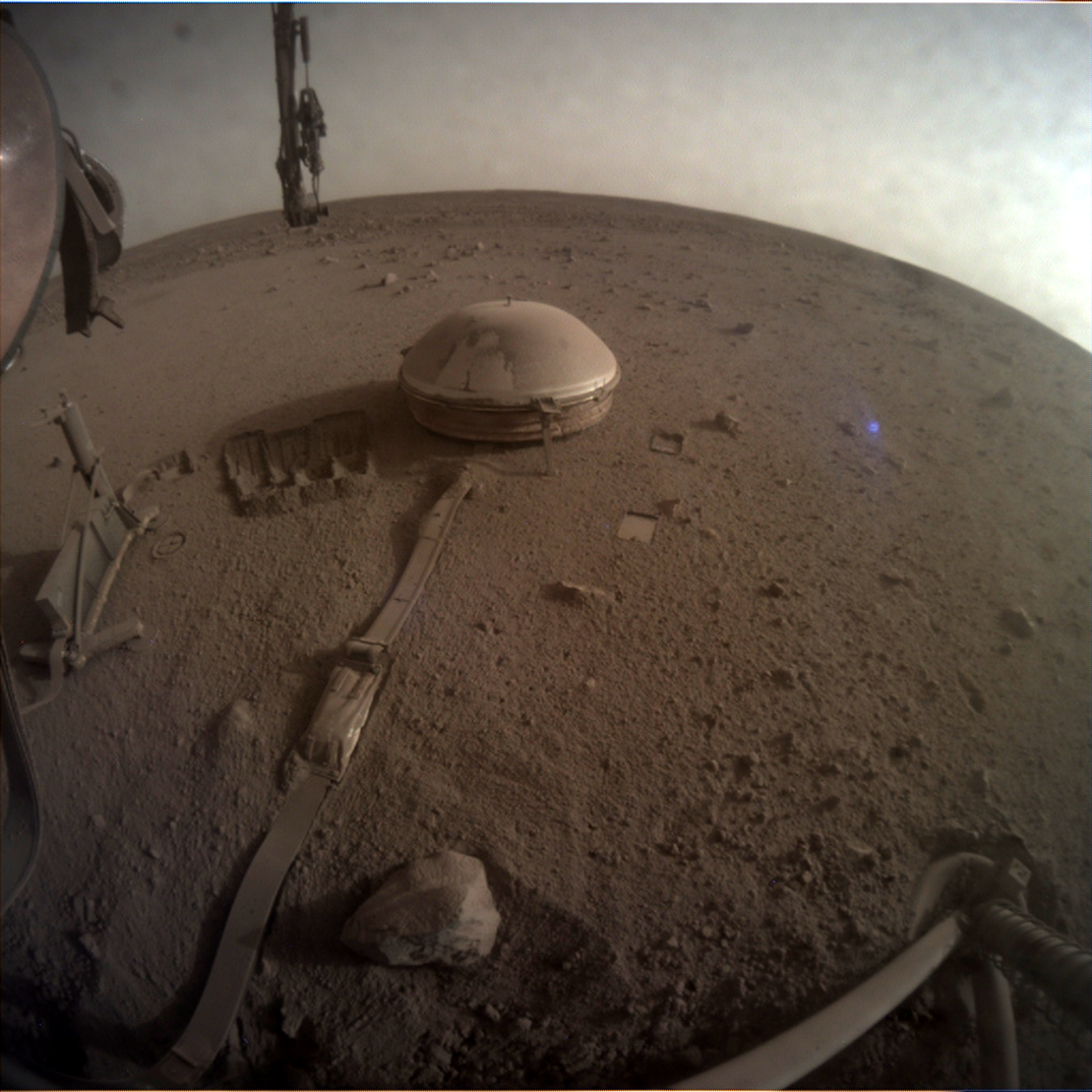InSight Says "Goodbye" from Mars
NASA has officially retired the InSight Mars Lander Mission after more than four years of service, and although this is sad, the science that has been done and will be done with the data it has collected is cause for celebration. The official retirement comes after two consecutive failed attempts to make contact with the lander. Mission controllers at the Jet Propulsion Laboratory have concluded that the solar-powered batteries that provide the energy to operate the lander have run out of juice.
On December 19, 2022, InSight tweeted the above photo along with the following message: “My power’s really low, so this may be the last image I can send. Don’t worry about me though: my time here has been both productive and serene. If I can keep talking to my mission team, I will – but I’ll be signing off here soon. Thanks for staying with me.”
InSight – Interior Exploration using Seismic Investigations, Geodesy, and Heat Transport – launched on May 5, 2018. After a 6-month long journey, it landed on the surface of Mars on November 26, 2018. InSight’s science goals – and hence its instruments – were very different from all previous Mars landers and rovers: it was the first mission whose task was to explore Mars’ deep interior.
Data obtained by instruments on the lander have uncovered secrets about Mars’ internal structure and layers, its liquid core, remnants of its mostly extinct magnetic field, weather on the surface of Mars, and lots of marsquake activity.
Here are some recent articles featuring results obtained from InSight data:
- Martian Core Identified Through Planetary Scan
- Two Largest Marsquakes Recorded to Date FTW
- Magma Is Still Shaping The Surface of Mars
- What is Causing the Red Planet to Shake?
- Mysteries of Martian Climate Revealed: Could They Solve Problems on Earth?
The main scientific instrument aboard InSight was a highly sensitive seismometer, which detected over 1,300 marsquakes. This marks the first time that seismology was the main focus of a mission beyond Earth since the Apollo astronauts brought seismometers to the Moon. This instrument was the last scientific instrument that remained powered on till the end of its mission.
Since InSight’s landing, its solar panels – which it relied on for power – had been continuously showered in dust and dirt, decreasing their efficiency and the amount of power they could produce. As a result, NASA had to find creative ways to remove the dust, but in the end it just wasn’t enough. The situation had deteriorated to the point where NASA turned off all InSight’s scientific instruments except its seismometer this past summer so that the lander could focus on its primary mission objective for as long as possible. And as expected, its mission has finally come to an end.
For more information about the mission, visit www.nasa.gov/insight.
Source: Live Science, NASA, NASA









